On November 5th, 2019, Mississippi held its state elections. The solidly-GOP state normally gets overlooked – but got special attention this year due to the candidacy of Jim Hood. The Democratic Attorney General was making the Mississippi Governor race a real contest for the first time in over a decade. Hood wound up not winning, but his 6% loss was the closest any Democrat had come in a long time.
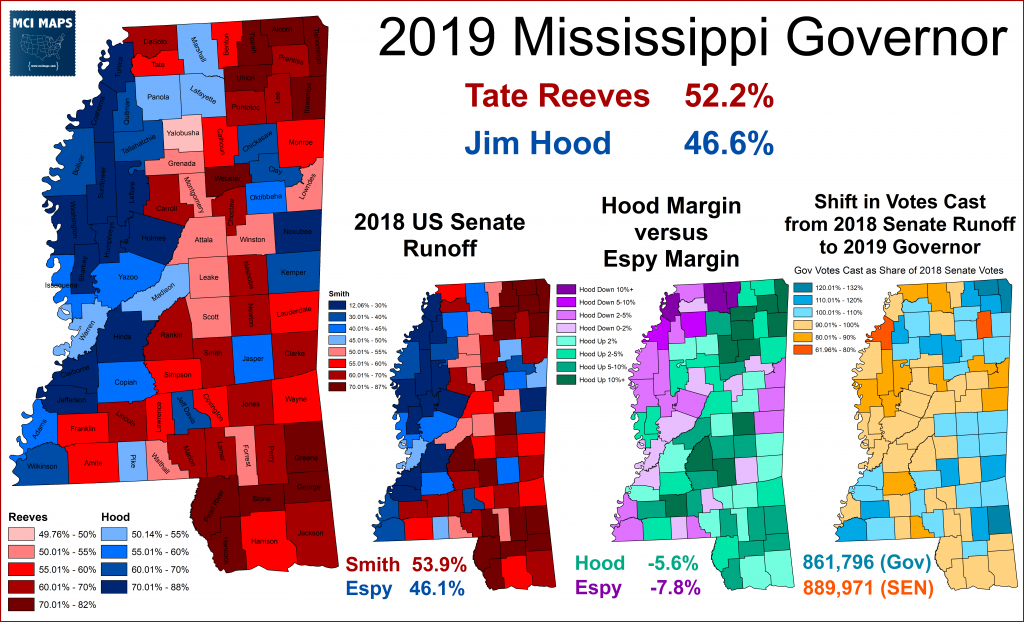
Of course, the depressing thing for Missisippi Democrats was this performance was still far below his 2015 Attorney General re-election.
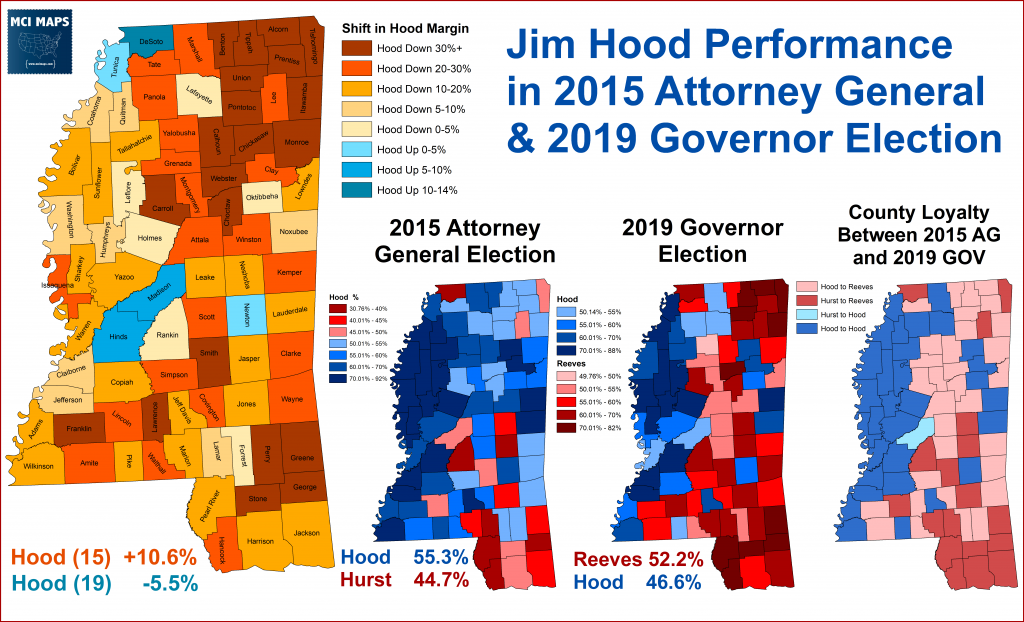
The same year Hood had been re-election for AG, the Democratic nominee for Governor had been a truck driver who lost by a staggering 66-32 margin. Hood shed ground in rural areas he used to do well in – but did improve in suburbs (a theme happening across the nation in the era of Trump).
Nevertheless, Hood’s 46.6% for Governor was the best showing for a Democrat in that race since 1999. That same day, the elections for state legislature featured a similar dynamic. Democrats won some suburban house seats, but in the state senate – rural Democrat-held state senate seats fell to the GOP.
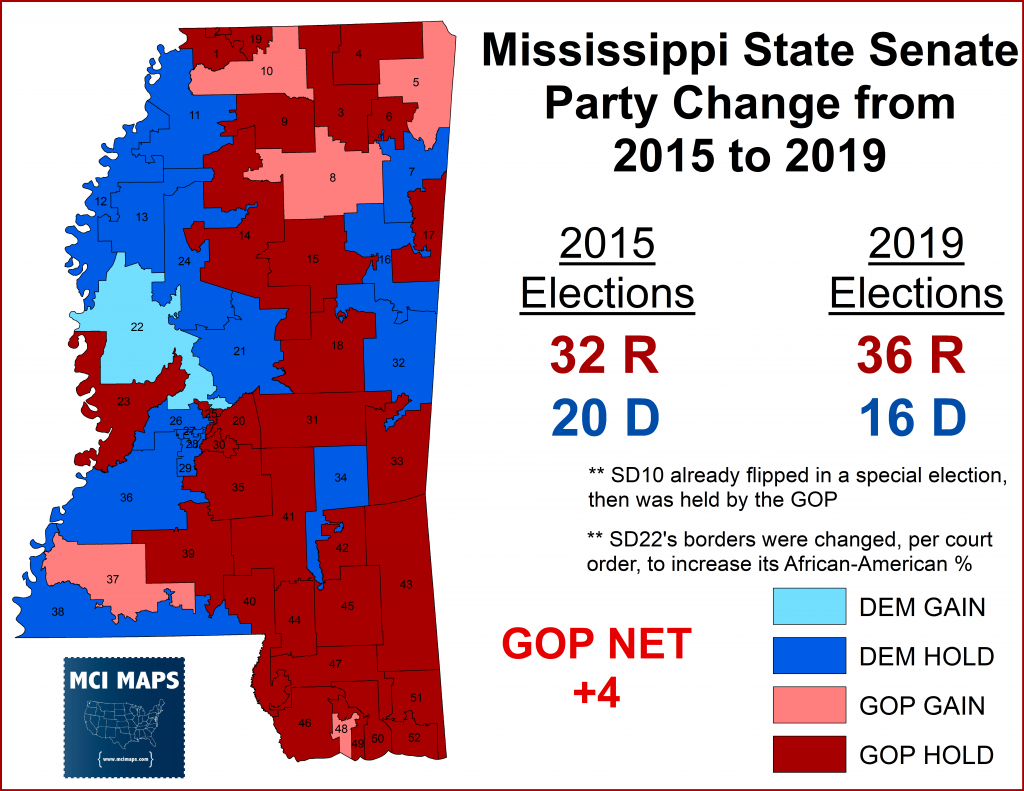
Overall, five seats held by democrats after 2015’s elections were in GOP hands. The lone pickup was in SD22 – located in the heavily-black Mississippi delta.
Most of the GOP pickups were rural-based seats. The biggest exception was 48, which is based along the gulf coast. In this case, the white incumbent, Deborah Dawkins, lost to Gulfport NAACP head Gary Fredericks. That primary fell on heavily racial lines. Fredericks, however, went on to lose the general election – despite Hood holding the seat by 8 points.
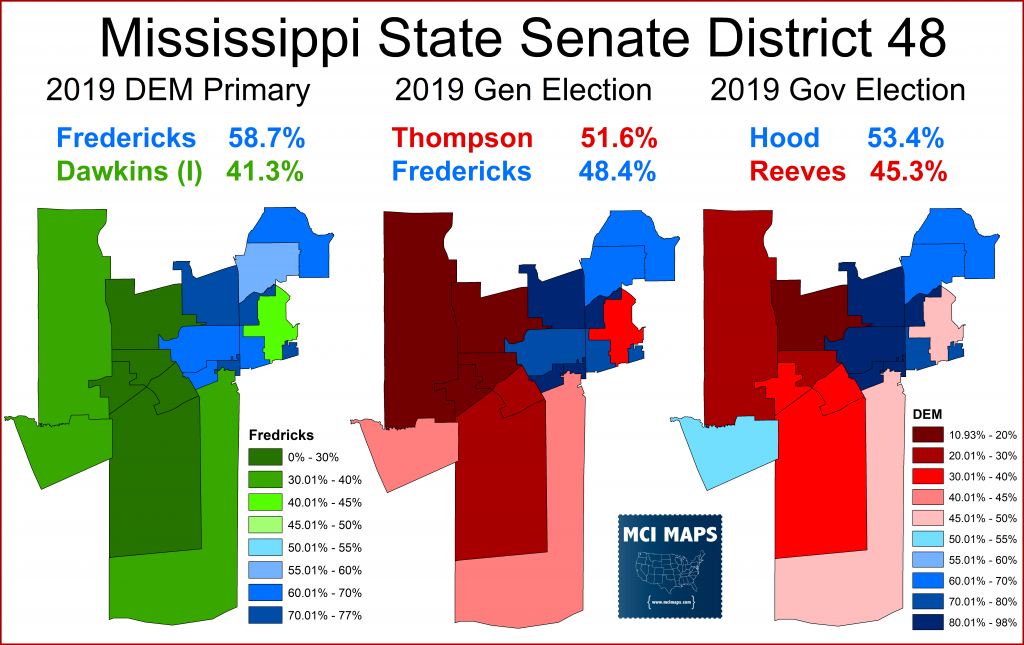
That seat’s chaotic election aside.
The lone Democratic pickup was in SD22. However, the pickup there wasn’t just due to campaign dynamics. It was because of court-ordered redistricting.
Senate District 22
Mississippi’s four year gap in state senate elections meant that 2015 was the first year that elections were held under the new lines. Final maps had been approved in 2012. The race for State Senate District 22 pitted Incumbent Republican Eugene Clark against a former Senator, Democrat Joseph Thomas. The district was drawn to link heavily-white portions of Bolivar county with some white suburbs in Madison County. In the middle were portions of the largely-black Mississippi delta. The black voting age population of the district was 51%, but the suburban whites had much stronger turnout. This allowed Clarke to win the race.
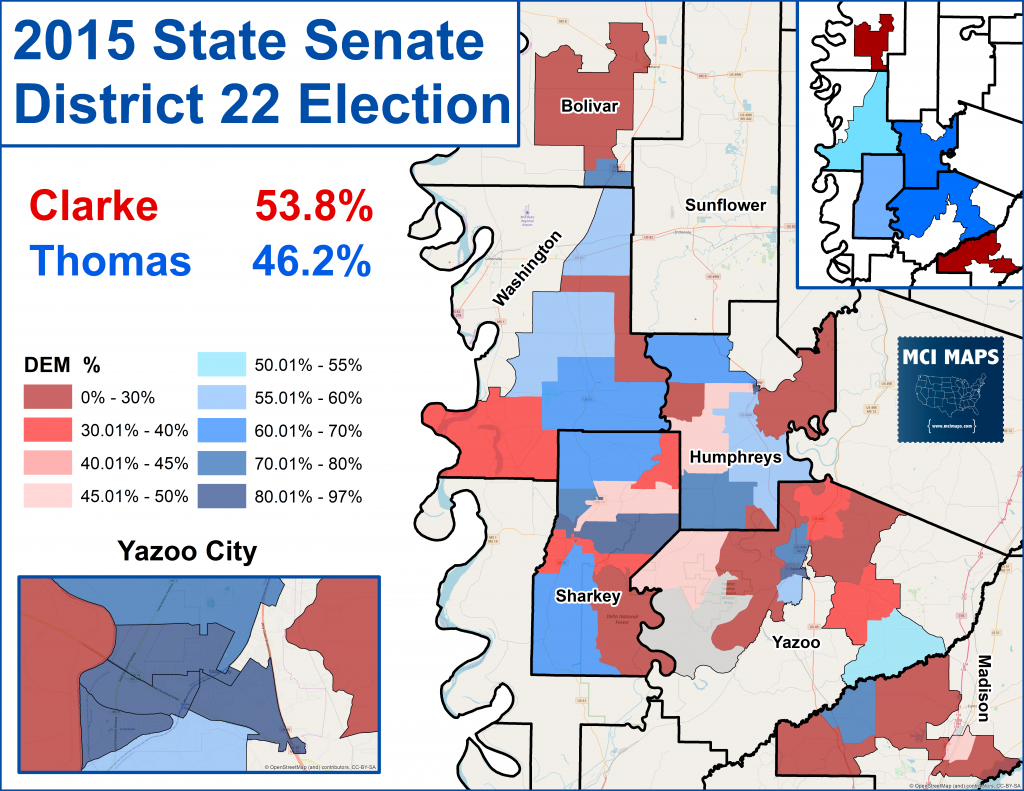
Observers and redistricting experts noted the problems with the district. It was intentionally drawn to connect white voters far away from each-other and create a potential GOP seat in the heart of the delta. The Madison portion was especially problematic. Madison is the richest county in Mississippi, and its higher-educated, higher-income white residents have much higher turnout than poorer and rural white and black voters along the delta.
Redistricting Lawsuit
The lines for Senate district 22 were sued over, and in 2019, a federal judge sided with the plaintiffs. It was ordered that the district be redrawn to increase the African-American share and specifically called out the issues with pairing poor black voters in the delta with rich white suburbanites. The order did not say Madison had to be removed, but sited testimony from experts that the African-American share of the VAP (voting age population) needed to be increased to account for weaker turnout.
The legislature agreed on a plan that resulted in few changes to other districts. SD22 traded territory with SD13, a much more solidly black district to the north. SD22 gave SD13 its Bolivar portion, and in exchange took in heavily black portions of Sunflower County.
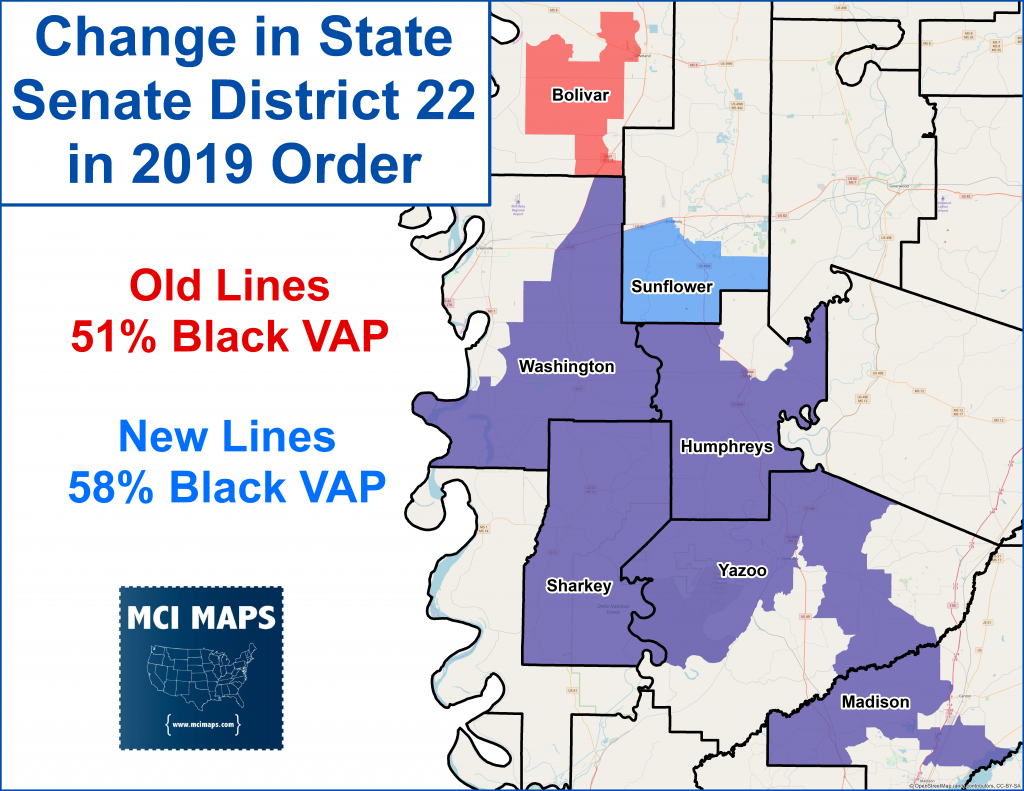
The change resulted in an increased black VAP of 58%. The 13th, meanwhile, went from 68% VAP to 62%.
The county-level table below shows the effect of redistricting on SD22.

The changes to districts were kept to just 13 and 22. The total number of majority-black districts remained the same, but the 22nd went from being marginally black to much more solid.
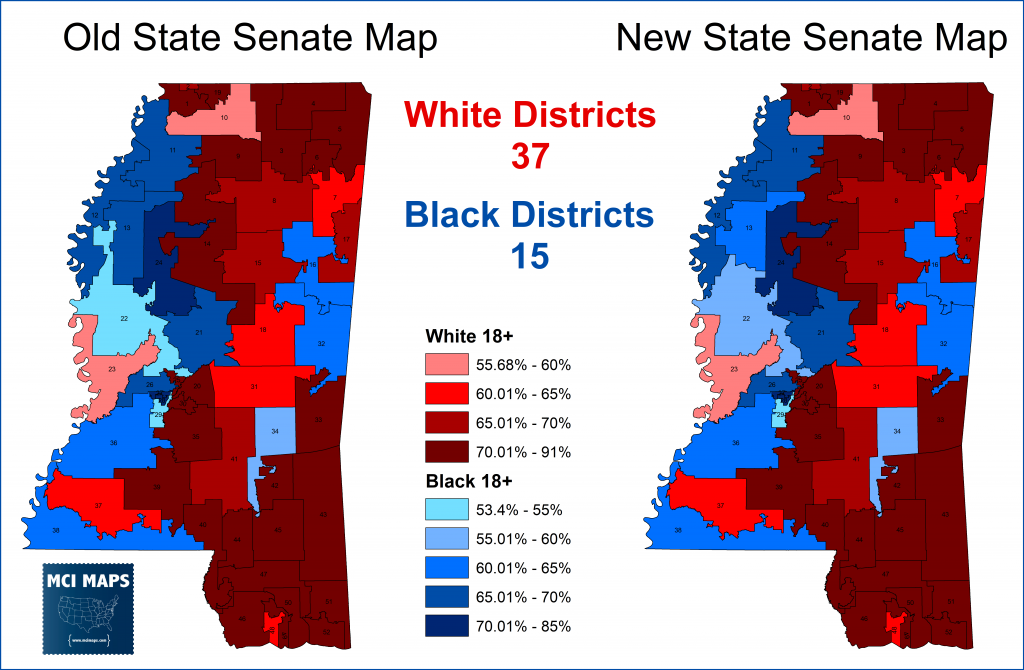
The results set the stage for a big battle in SD22 in the 2019 elections, which were just months away.
2019 Election for SD22
Former Senator Joseph Thomas made his intentions to run again clear. However, he did not have the primary to himself. He faced multiple challengers. His top ones were….
- Ruffin Smith – Louise Mayor
- Ermea Russell – former Appeals Court judge
- Mark Buckner – A former SD13 candidate who lives in Sunflower
Buckner was especially vocal in his dislike about the line changes – which had taken him out of the SD13 race and put him in SD22. Sunflower locals were not happy about the split in their county to be sure and there was plenty of internal politics and division going on in the SD13 – as Senator Willie Simmons was retiring and his daughter, Sarita, was running for the seat (she ultimately won).
The SD22 primary became a four way battle, with each candidate taking different regions based on their bases of support. Thomas easily won the primary, but was dragged into a runoff. He dominated in his base of Yazoo city – scoring over 80% in much of the area.
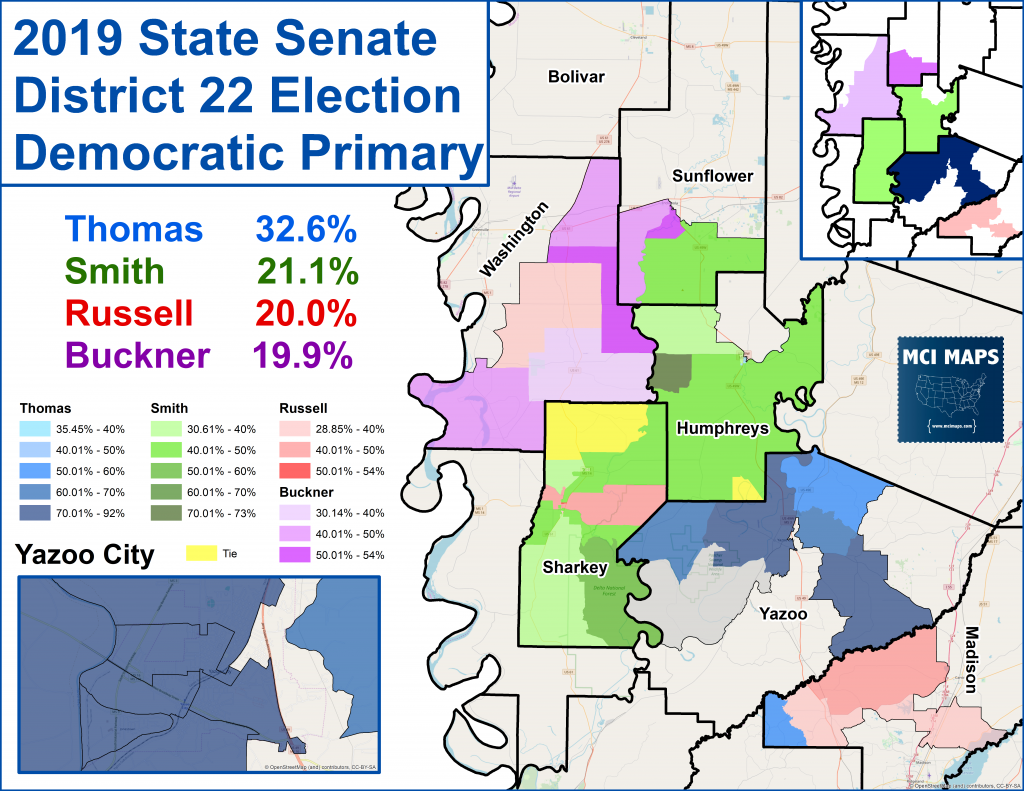
Smith did well in his Humphreys county base and in Sharkey county – allowing him to narrowly make the runoff. Russell did well in her base around Madison ad Buckner won in Sunflower and Washington.
The runoff featured a Northeast vs Southwest divide – with Thomas dominating vote-heavy Yazoo and Madison and Thomas taking the northern counties – minus Sunflower.
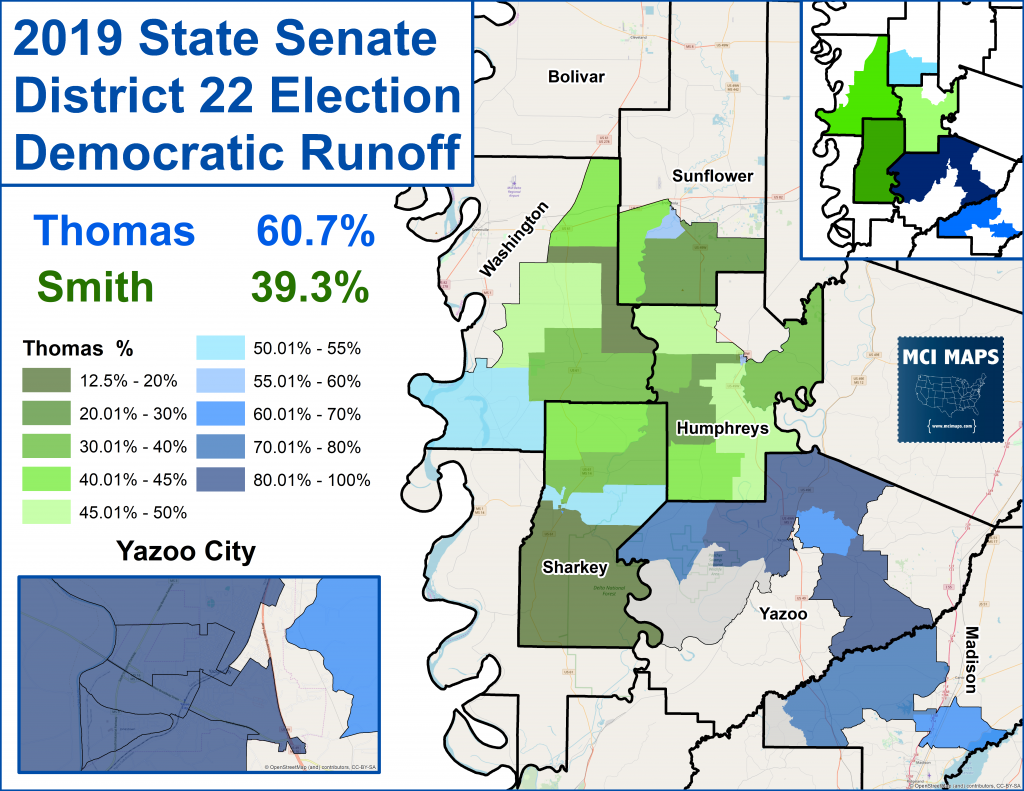
The larger vote totals in Yazoo/Madison allowed Thomas to easily secure the runoff win.
Thomas went on to face Republican Hayes Dent in the general election Incumbent Eugene Clark had opted to run for Mississippi Treasurer. The race was heavily contested by both parties, and some nasty racially-charged mailers emerged from a third-party group late in October. Thomas wound up winning by a 4.4% margin.
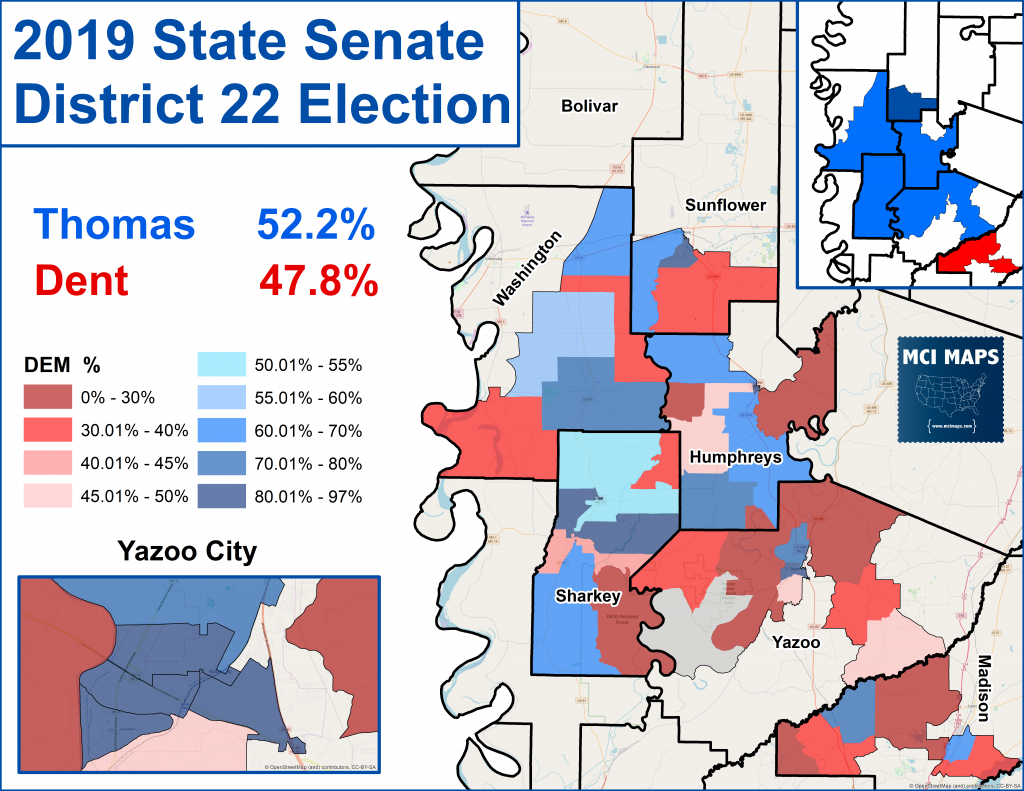
Much like 2015, the delta counties were solid blue and Madison was solid red. The lack of Bolivar and addition of Sunflower were key to Thomas’ win.
In 2015, Bolivar had netted the GOP an extra 800 votes. Redistricting took that 800 away and added 800 from Sunflower. These two changes alone would have flipped the seat – regardless of changes in the other counties.

Thomas could have gotten the same vote share in the other counties and won by a much narrower margin, but he also did improve in the other counties.
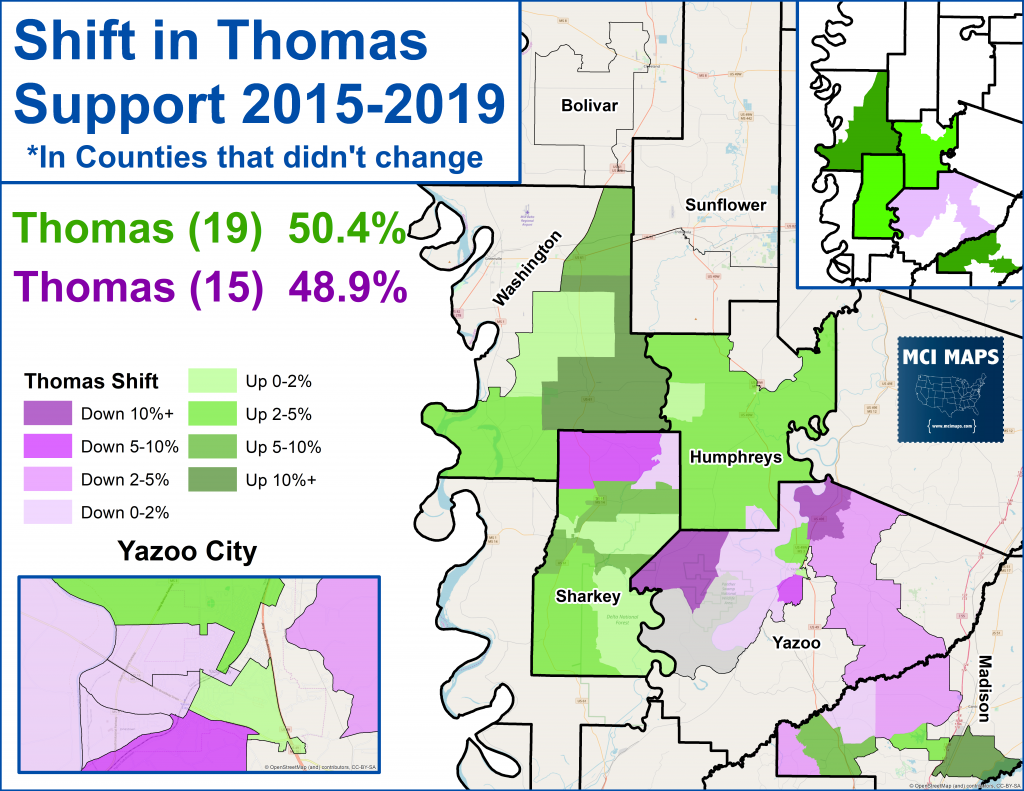
The only county Thomas did worse in was Yazoo, but it was by a very small margin. Delta turnout was overall up across the board, as the Governor’s race was a real battle compared to 2015. The district overall saw 5,000 additional votes cast.
Effects of Redistricting
The effects of the redistricting of SD22 aren’t confined to the state senate race. We can see how it changed the partisan nature of the district across the board. For example, the old 22nd voted for Donald Trump by a 4.5% margin – with a similar dynamic as the 2015 state senate race.
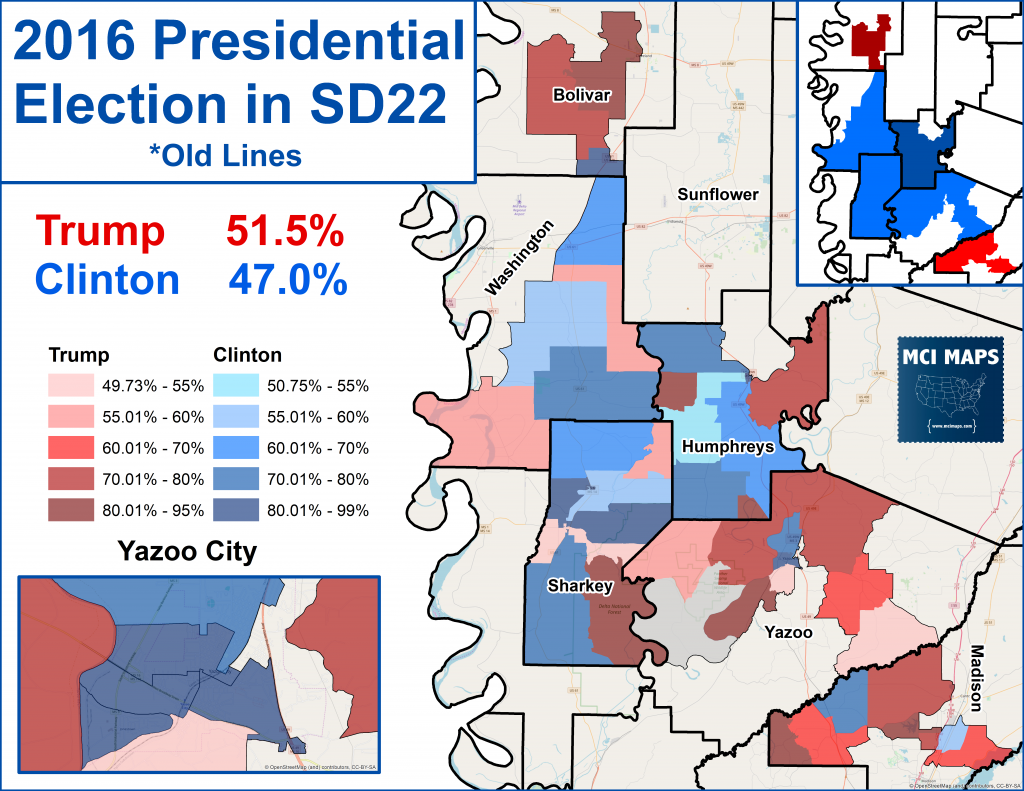
Under the new lines, Clinton won the seat by 6.7%.
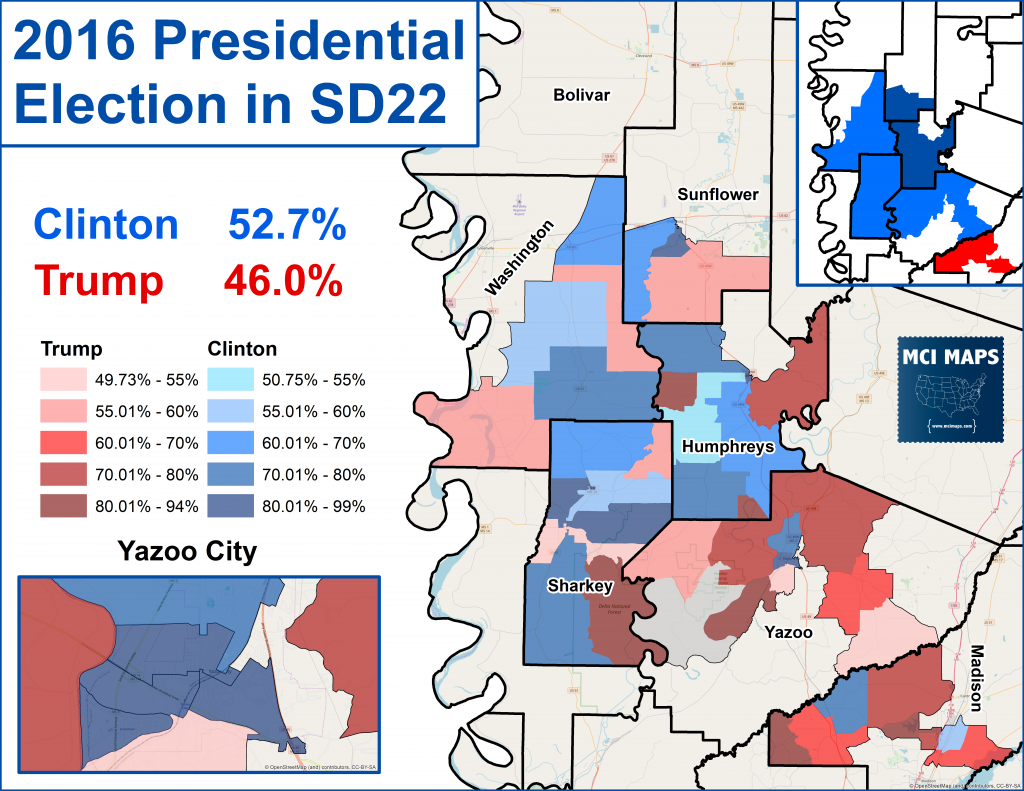
The 2019 Governor was saw Jim Hood win 59% in the district, by far a high point for the party in the seat.
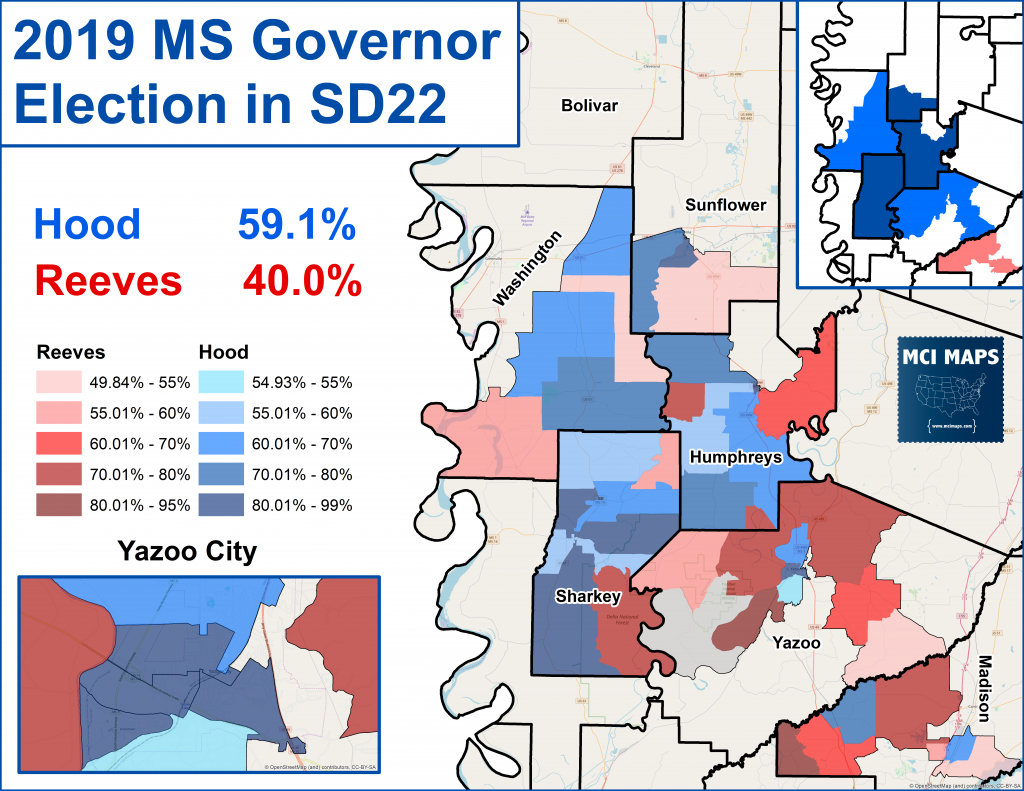
I broke down assorted races in the old and new lines for the district. The new lines flip who the district backs for 2019 AG and 2016 President, and the races for 2015 Governor and 2015 LT Governor also get much closer. Let the 2015 data show just how bad a year that was for Mississippi democrats.

The data shows redistricting made a seat much more winnable for democrats. The lopsided turnout dynamics between poor delta blacks and rich white suburbanites – but the increased black VAP helps balance that dynamic.
The 2023 State Senate lines will occur after redistricting. The question will be if the Republican trifecta try to tinker with dynamics to improve their chances, or if they call it a day and don’t risk another lawsuit. Time will tell.

